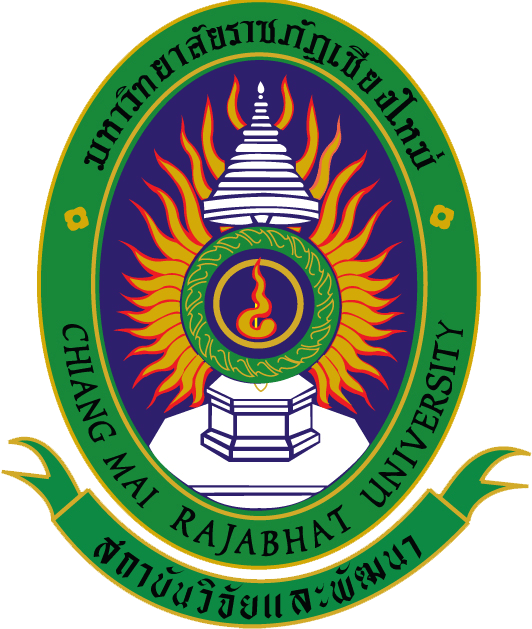
ระบบสารสนเทศงานวิจัย สถาบันวิจัยและพัฒนา มหาวิทยาลัยราชภัฏเชียงใหม่
Research Information System(RIS)
การยกระดับผลิตภัณฑ์ผ้าและสิ่งทอเพื่อสนับสนุนการท่องเที่ยวจังหวัดแม่ฮ่องสอน
ผู้ช่วยศาสตราจารย์ ว่าที่ร้อยตรีหญิงจินตนา อินภักดี
คณะวิทยาศาสตร์และเทคโนโลยี
คำสำคัญ :
เลขทะเบียน :
1449-64-SCI-TSRI
บทคัดย่อ
การยกระดับผลิตภัณฑ์ผ้าและสิ่งทอเพื่อสนับสนุนการท่องเที่ยวจังหวัดแม่ฮ่องสอนให้ สามารถพัฒนาผลิตภัณฑ์ผ้าและสิ่งทอเพื่อตอบโจทย์ผู้บริโภค และเป็นการสร้างรายได้ที่มั่นคงให้ ผู้ผลิตผ้าและสิ่งทอ เพื่อลดปัญหาความยากจนของประชากรในจังหวัด โดยมีวัตถุประสงค์ของการวิจัย เพื่อ 1) ศึกษาและประเมินศักยภาพวิสาหกิจชุมชนผู้ผลิตผลิตภัณฑ์ผ้าทอของชุมชนท่องเที่ยวใน จังหวัดแม่ฮ่องสอน 2) พัฒนาเครือข่ายวิสาหกิจชุมชนผู้ผลิตผลิตภัณฑ์ผ้าทอของชุมชนท่องเที่ยวในจังหวัดแม่ฮ่องสอน 3) จัดทำแผนโมเดลธุรกิจของวิสาหกิจชุมชนผู้ผลิตผ้าทอของเครือข่ายการ ท่องเที่ยวโดยชุมชนในจังหวัดแม่ฮ่องสอน และ 4) ศึกษา/พัฒนาองค์ความรู้ในการผลิต และพัฒนา ผลิตภัณฑ์ผ้าทอที่เป็นอัตลักษณ์ของชุมชนท่องเที่ยว โดยพื้นที่ทำการวิจัย คือ จังหวัดแม่ฮ่องสอน กลุ่ม ตัวอย่าง ได้แก่ 1) ผู้ให้ข้อมูลหลักเป็นกลุ่มชาติพันธุ์ 2 กลุ่ม คือ กะเหรี่ยง และลั๊วะ ที่มีศักยภาพและมีความจำเป็นได้รับการพัฒนา 2) กลุ่มผู้บริโภคสำหรับสำรวจความต้องการผลิตภัณฑ์ผ้าและสิ่งทอ จำนวน 300 คน 3) กลุ่มผู้บริโภคสำหรับทดสอบตลาด จำนวน 400 คน เครื่องมือที่ใช้ในการวิจัย ได้แก่ การวิเคราะห์ SWOT analysis, Business Model Canvas การประชุมกลุ่ม (Focus Group) แบบสอบถามความต้องการ และแบบทดสอบตลาด ข้อมูลเชิงคุณภาพใช้การวิเคราะห์เนื้อหา ส่วนเชิง ปริมาณวิเคราะห์ข้อมูลโดยหาค่าร้อยละ ค่าเฉลี่ย และส่วนเบี่ยงเบนมาตรฐาน ผลการวิจัยพบว่า การศึกษาและประเมินศักยภาพวิสาหกิจชุมชนด้วยการวิเคราะห์สภาพแวดล้อม (STOW Analysis) 6 ชุมชนเป้าหมายมีศักยภาพในการพัฒนาผลิตภัณฑ์ทอตามตัวชี้วัดทั้ง 6 ข้อ ได้แก่ 1) การ บริการจัดการภายในกลุ่ม 2) การมีส่วนร่วมของคนในชุมชน 3) ทักษะ ความสามารถความรู้การ พัฒนาผลิตภัณฑ์ 4) การคิดค้น ส่งเสริม ใช้ผลิตภัณฑ์จากวัตถุดิบและภูมิปัญญาในท้องถิ่น 5)เครือข่าย องค์กรทั้งภาครัฐและเอกชน และ 6) มีแหล่งท่องเที่ยวในชุมชน สำหรับการพัฒนา เครือข่ายวิสาหกิจชุมชนได้จัดกิจกรรมสร้างเครือข่ายในลักษณะของการอบรมเชิงปฏิบัติการ (Work Shop) ให้แต่ละชุมชนได้มาแลกเปลี่ยนเรียนรู้3 ประเด็น ได้แก่ ด้านการเรียนรู้และการพัฒนา ด้าน การผลิต และด้านการตลาด เพื่อนำไปประยุกต์ใช้ในการขับเคลื่อนบริหารจัดการกลุ่มของตนเองต่อไป ส่วนการจัดทำแผนโมเดลธุรกิจของวิสาหกิจชุมชน พบว่า องค์ประกอบที่ 1-9 ของชุมชนเป้าหมายมี ความคล้ายคลึงกัน ในขณะที่การศึกษา พัฒนาองค์ความรู้ในการผลิต และพัฒนาผลิตภัณฑ์ผ้าทอที่เป็นอัต ลักษณ์ของชุมชนท่องเที่ยว จำเป็นต้องพัฒนาองค์ความรู้ในการผลิตตั้งแต่กระบวนการต้นน้ำ กลางน้ำ และปลายน้ำ เพื่อให้กลุ่มมีกำลังการผลิตที่การกระจายตัว ไม่กระจุกอยู่ที่คนใดคนหนึ่งในกลุ่ม สำหรับ วัสดุที่นำมาทดลองย้อมสีเพื่อพัฒนาเป็นผลิตภัณฑ์ต้นแบบ พบว่า ผ้าฝ้ายที่ย้อมด้วยลูกก๊อสุกและ มะขามป้อม ลูกก๊อดิบ เปลือกเพกา และเปลือกคั๊วะมีความคงทนของสีอยู่ในเกณฑ์ที่ยอมรับได้ตาม มาตรฐานผลิตภัณฑ์ชุมชน (มผช.) ส่วนผ้าฝ้ายที่ย้อมด้วยใบฮ้อม เปลือกสะนอย รากไม้เรือง เทียดี- อวด และลูกคนทา ไม่ผ่านเกณฑ์มาตรฐานอาจต้องหาสภาวะการย้อมที่เหมาะสมอีกครั้ง สำหรับ ผลิตภัณฑ์ที่ผู้บริโภคมีความต้องการให้พัฒนามากที่สุด คือ เสื้อผ้า และบรรจุภัณฑ์เฉพาะที่มี รายละเอียดต่าง ๆ เช่น ราคา การซักล้าง การดูแลรักษา และเว็บไซต์ แฟนเพจ Instagram line เบอร์โทรศัพท์ ช่องทางในการติดต่อ และการสั่งซื้อ เป็นต้น เมื่อนำผลิตภัณฑ์ต้นแบบพร้อมบรรจุ ภัณฑ์ไปทดสอบตลาด พบว่า ปัจจัยส่วนผสมทางการตลาดด้านผลิตภัณฑ์มีค่าเฉลี่ยสูงที่สุด 4.36 ด้าน ราคา และด้านการส่งเสริมการตลาดมีค่าเฉลี่ยเท่ากัน คือ 4.24 และด้านช่องทางการจัดจำหน่าย มี ค่าเฉลี่ยเท่ากับ 4.23 ตามลำดับ
Abstract
Enhancement of fabric and textile products is a way to support tourism in Mae Hong Son Province to be able to develop fabric and textile products to meet the needs of consumers and it is a stable income for fabric and textile manufacturers to reduce poverty problems of the people in the province. The objectives of this research were: 1) to study and assess the potential of community enterprises producing textile products of tourism communities in Mae Hong Son Province; 2) to develop a network of community enterprises producing textile products of the tourism community in Mae Hong Son Province; 3) to develop a business model for community enterprises producing textile products of the community-based tourism network in Mae Hong Son Province, and 4) to study/develop the body of knowledge in production and develop textile products that are the identity of the tourism community. The research area was Mae Hong Son Province. The sample groups were: 1) key informants of two ethnic groups, namely Karen and Lua, who had potential and need to be developed; 2) Three hundred consumers from the survey group on demand for fabric and textile products; and 3) Four-hundred consumers for market testing. Research tools were SWOT analysis, Business Model Canvas, Focus Group, questionnaire, and market testing. Qualitative data were analyzed by content analysis and quantitative data was analyzed by finding the percentage, mean and standard deviation. The results showed that: The study and assessment of the potential of community enterprises through STOW Analysis showed that six target communities had the potential to develop textile products according to six indicators; 1) intra-group management; 2) participation of people in the community; 3) skills, capability, and knowledge in product development; 4) invention, promotion, and using products from raw materials and local wisdom; 5) public and private networks and organizations; and 6) having a tourist attraction in the community for the development of community enterprise networks to held activities for creating networks in the form of workshops for each community to exchange and learn on three issues: learning and development, production, and marketing to be applied for driving the management of their group. For the preparation of the business model of community enterprises, it was found that the first to the ninth component of the target communities were similar, while the development of the body of knowledge in production and development of textile products that were the identity of the tourism community needed to develop the body of knowledge in production from upstream, midstream and downstream processes for the group to have a distributed production capacity which did not concentrate on any person. For materials used for dyeing experiments to develop into prototype products, it was found that the cotton fabrics dyed with ripe Gor and Indian gooseberry, raw Gor, Oroxylum indicum bark, and Cua bark had colorfastness in the acceptable criteria according to the community product standard, while the cotton fabrics dyed with Cusia leaves, Sanoy bark, Ruang root, Thiadi-auad, and Harrisonia perforata bark did not meet the standard. So, it needs to find a suitable dyeing condition. The most wanted products that consumers wished to develop were clothes and specific packaging with details such as price, washing methods, care, and contact channels for order, for example, website, fan page, Instagram, LINE, and phone number. When the prototype product with the packaging was tested in the market, it was found that the marketing ingredient factor in the aspect of the product had the highest average of 4.36 while the aspect of price and the marketing promotion had the same average of 4.24, and the aspect of distribution channel had the average of 4.23 respectively.
ไฟล์งานวิจัย
28 07 ต.ค. 2564
สำนักงานคณะกรรมการส่งเสริมวิทยาศาสตร์ วิจัยและนวัตกรรม (สกสว.)
สำนักงานคณะกรรมการส่งเสริมวิทยาศาสตร์ วิจัยและนวัตกรรม (สกสว.) ชั้น 14 อาคาร เอส เอ็ม ทาวเวอร์ 979/17-21 ถนนพหลโยธิน แขวงสามเสนใน เขตพญาไท กรุงเทพฯ 10400
02 278 8200
callcenter@trf.or.th, webmaster@trf.or.th